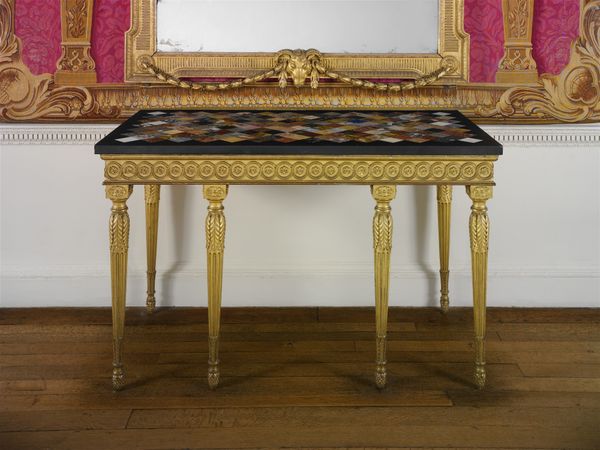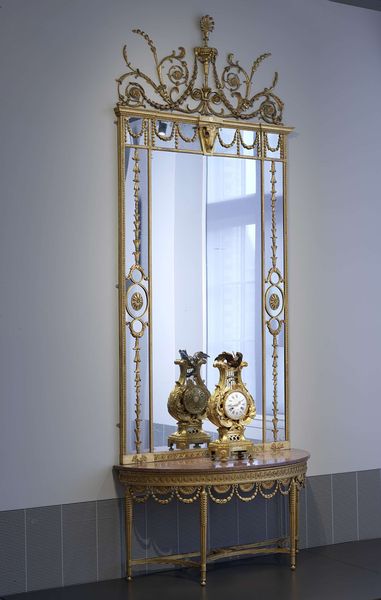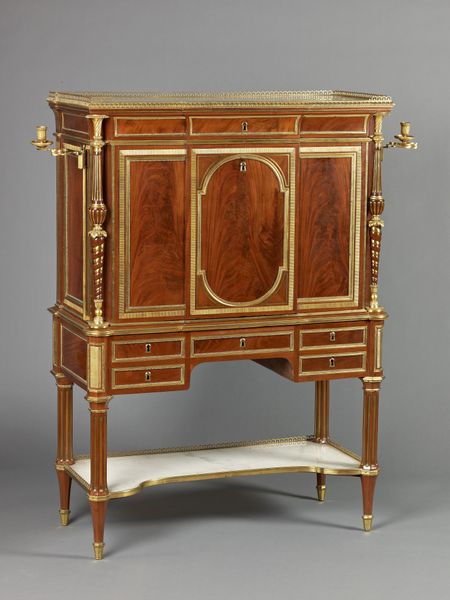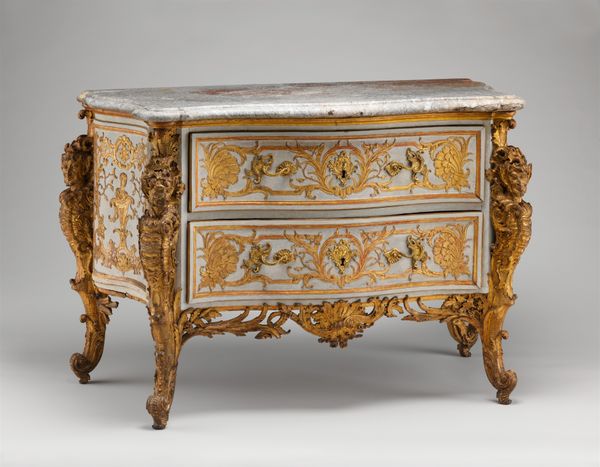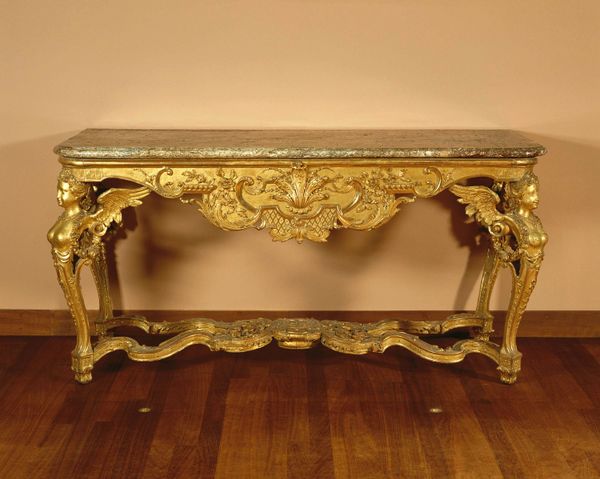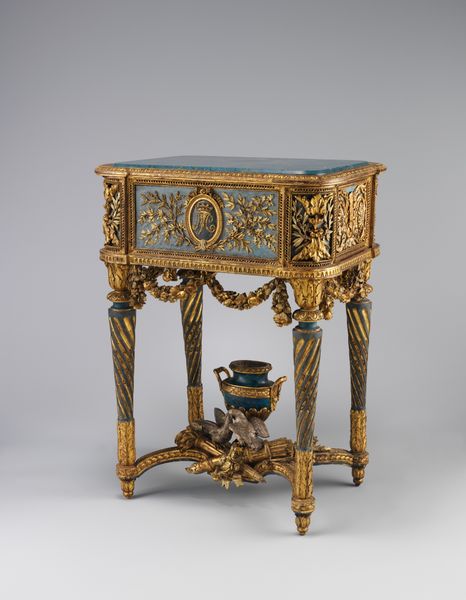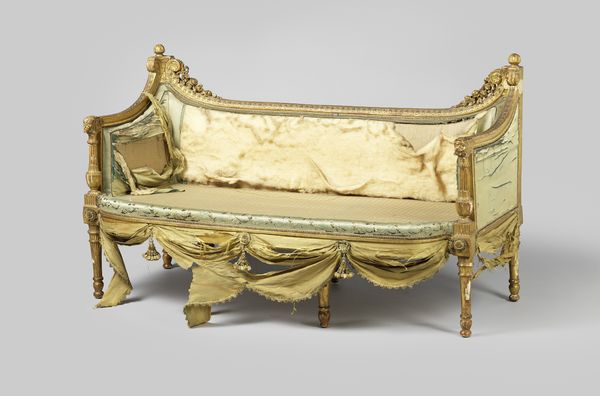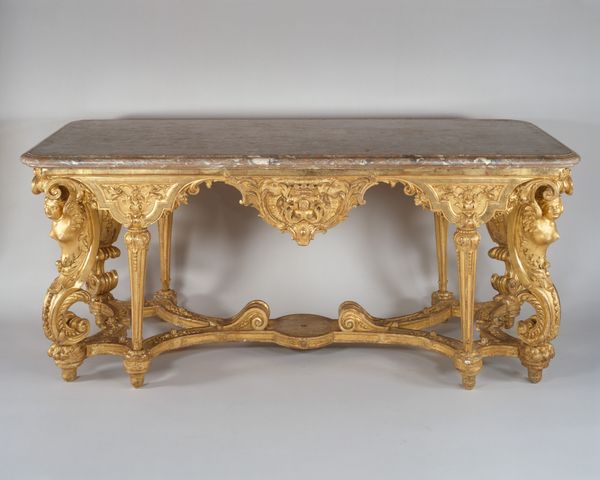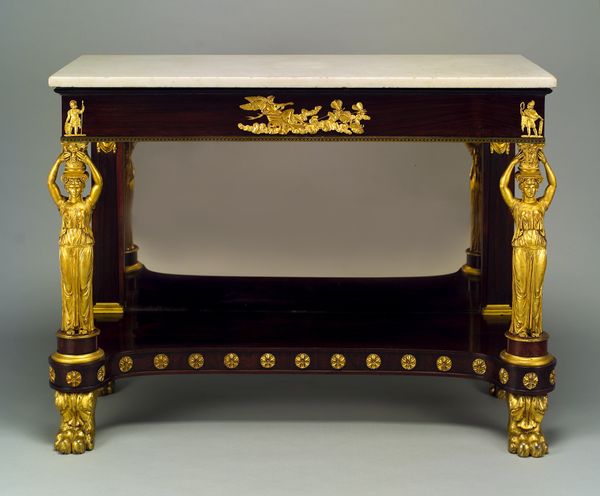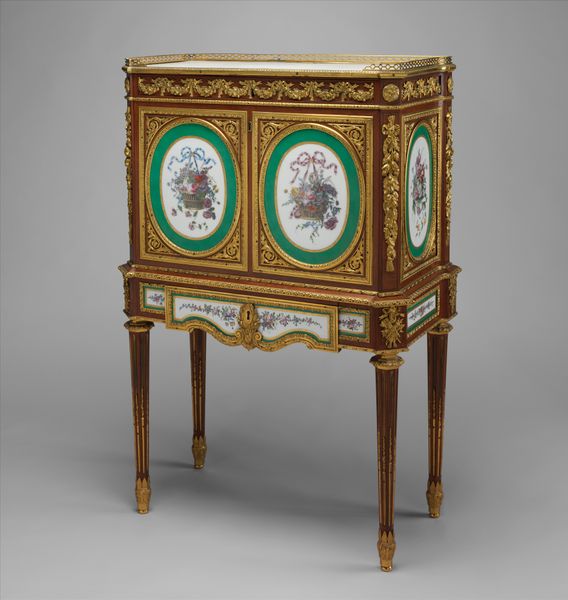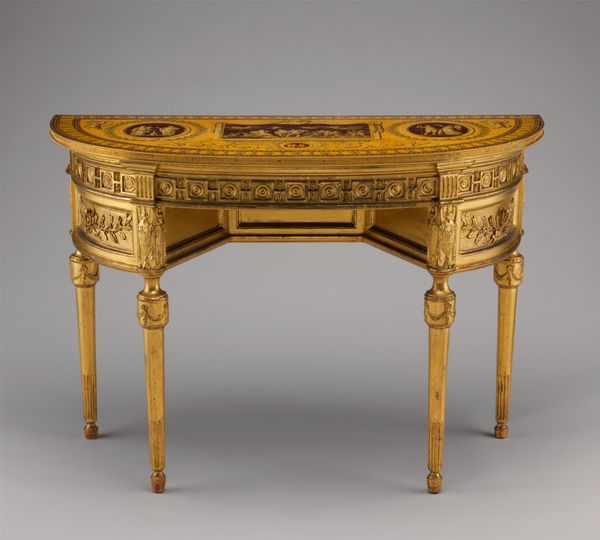
Side table (commode servante or commode desserte) 1785 - 1795
0:00
0:00
Dimensions: H. 36 in. (91.4 cm.), W. 44-5/8 in. (113.3 cm.), D. 16-1/4 in. (41.3 cm.)
Copyright: Public Domain
Editor: We’re looking at a side table, or *commode servante*, crafted between 1785 and 1795 by Jean Henri Riesener. The use of wood and gold is just…astonishing. There's a richness to it. How do you even begin to think about a piece like this? Curator: Let's start with what's right in front of us. Wood and gold, yes, but also the process of layering, of veneering, of carving. Riesener wasn’t just creating an object, but constructing a statement about the material world. Where do you see the evidence of labor here? Editor: I suppose in the intricate gold details; how painstakingly each flourish must have been applied? Curator: Exactly. This isn’t just about aesthetics; it reflects a complex social dynamic. This level of craftsmanship meant a substantial investment of both labor and resources. Does knowing that change how you view it? Editor: It makes me wonder about the hands that made it, and for whom it was intended. What does a side table like this *do*, besides look impressive? Curator: Functionality is almost secondary. This piece represents a moment of material excess. Think about pre-revolution France and the role that objects played in solidifying class differences. It’s about *display*. Editor: So, it's not just a beautiful object, but a symptom of larger societal trends relating to production, consumption and social class in pre-revolutionary France. I see it differently now. Curator: Indeed. Considering the labor, the resources, and the intent behind the commode unlocks a whole new understanding. What’s next? Editor: I’ll never look at furniture the same way again! Thanks, this has been incredibly helpful.
Comments
No comments
Be the first to comment and join the conversation on the ultimate creative platform.
